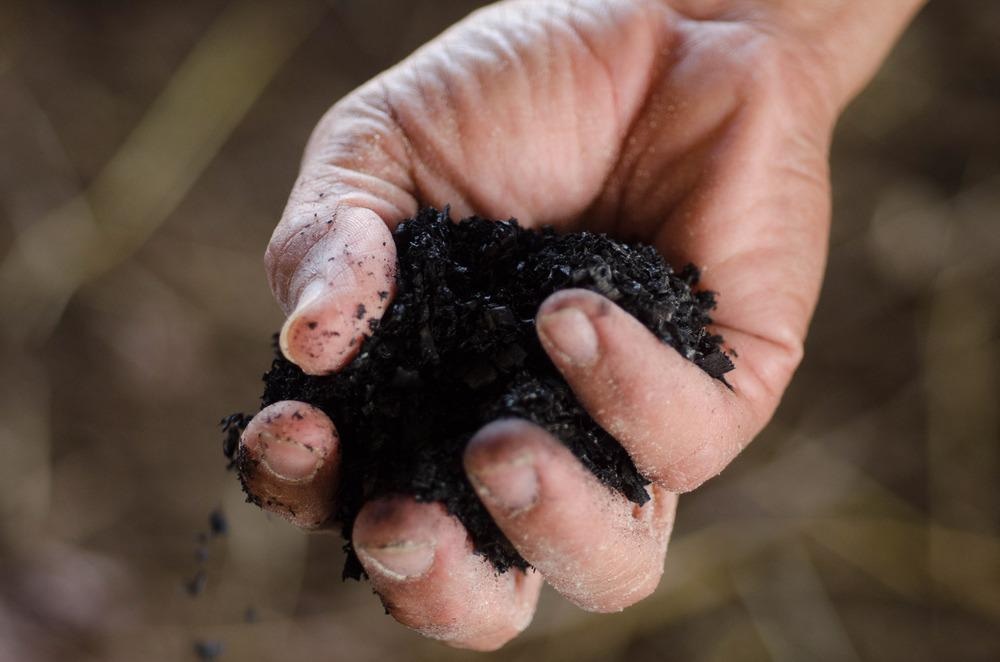A thorough review of the utilization of nano-biochar for the improvement and modulation of techniques for the agricultural industry and environmental sustainability has been publihsed in the journal Environmental Research.

Study: Nano-biochar: A novel solution for sustainable agriculture and environmental remediation. Image Credit: paroonkorn srichan/Shutterstock.com
Introduction to Biochar
Biochar materials are abundant in carbon in terms of chemical composition and are obtained from the output of thermally controlled chemical degradation of biomass. This process generally takes place in a restricted supply or absolute absence of oxygen.
Biochar (BC) has recently been widely used as a soil additive and manufactured on a large scale worldwide. The usage of BC has industrial applications in a variety of fields, including agriculture, agro-industry, biotechnology, and pollution control.
Bulk-BCs (sizes ranging from a few mm to a few cm) are often used in agricultural applications. Biochar-based solutions for dealing with fossil fuel emissions are relatively new.
Difference between Biochar and Nano-biochar
Nano-biochar is a specific biochar substance that has a structural size in the nanometre range possessing improved physiochemical as well as morphological characteristics.
Apart from the size range, the inherent properties include intra-particle forces, morphology, cation exchange capacity (CEC), and specific surface area (SSA).
The size of BC is mostly determined by the settings used during thermal decomposition. By adjusting the thermal decomposition temperatures and grinding duration, the size of BCs may be optimized.
Fabrication of Nano-biochar
Mechanical crushing is claimed to be the most commonly utilized approach for nano-BC production.
Grinding is a well-known process for converting woody BC obtained from Gliricidia sepium into graphene nano-BC. Recently, pre-processed and dehydrated rice husk-derived nano-BC manufacturing aided by milling has also been described.
The manufacturing of nano-BC from pine wood using a ball milling method has also been demonstrated as a sustainable and energy-efficient method.
Application of Nano-Biochar for Improvements of Agricultural Soil Properties
Climate change and technological challenges have recently had a significant impact on the agriculture sector. These problems, particularly in agriculture and soil, might be handled by utilizing nano-BC, which can reduce the natural bioavailability of toxicants while also restoring damaged soils.
The use of nano-BC increases soil properties, making it more suitable for the growth and development of plants. Nano-BC provides an optimal soil habitat for bacteria by improving soil porosity, resistance, and water holding capabilities, all of which are essential for soil activity maintenance.
According to several tests, the emission of N2O drops by about 83% following BC modification. Additionally, biochar amendment at a rate of 1% – 2% (w/w) has been shown to increase soil bulk density and water retention capacity.
Removal of Soil Toxins by Nano-Biochar
Tree roots and other important minerals effectively absorb nano-BC floating or scattered in water. Rice grew well, and the anatomical alterations in saplings improved as a result of the cumulative effect of nano-BC and ferulic acid.
Soil researchers and cultivators are concerned about potentially dangerous metal contamination. Because of their sustainability and nanotechnology-related properties, the usage of BC and nano-BC is getting popular in their elimination.
Biochar-based techniques for metal cytotoxicity mitigation have been developed; however, due to the lack of nano-specific features, this effectiveness could not be fully used.
Utilization of Nano-biochar for Environmental Remediation
Nano-remediation techniques have proven to be beneficial to ecological sustainability and pollution reduction. Biochar and nano-BC are capable of dealing with the considerable influence of carbon nanotechnology in agribusiness and botanical engineering to increase crop output.
Nano-BC not only accelerates the decomposition of organic pollutants by coordinating energy shifts like a catalytic substance, but it may also actively interact with hazardous pollutants, therefore positively impacting external factors or concerns.
Antibiotic Removal by Nano-Biochar
Bulk-BC generated biomass was used for the absorbance of antibiotic materials such as sulfamethoxazole and chloramphenicol.
Nano-BC, on the other hand, has an advantage over the bulk-BC since it contains a higher proportion of exterior reactive groups.
A recent study employed nano-BC derived from wheat via milling method to extract tetracycline from alkaline phase via sorption process. Nano-BC outperformed bulk magnetic BC in terms of antimicrobial removal capacity. This might be considered a convincing confirmation of the effectiveness of nano-biochar.
However, it must be remembered that there are several drawbacks to using natural nano-BC for primary ecological applications, including limited stability and difficulties in isolating nano-particles. However, the limits and risks associated with them can be mitigated by various processes developed through additional research.
Reference
Rajput, V.D. et al. (2022) A novel solution for sustainable agriculture and environmental remediation. Environmental Research. Available at: https://www.sciencedirect.com/science/article/pii/S0013935122002183
Disclaimer: The views expressed here are those of the author expressed in their private capacity and do not necessarily represent the views of AZoM.com Limited T/A AZoNetwork the owner and operator of this website. This disclaimer forms part of the Terms and conditions of use of this website.